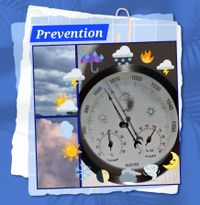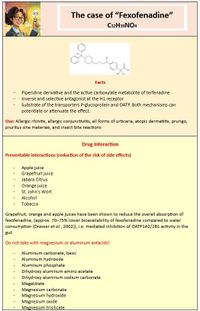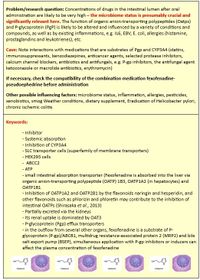COVID-19, Long COVID, ME/CFS
A Holistic Perspective on Treatment and Prevention
As I hope that many Long COVID and ME/CFS patients can achieve better health outcomes, I am sharing my own medical journey. Many aspects of Long COVID, ME/CFS, and EBV exhibit strong parallels, meaning that certain insights from my personal experience may also be beneficial to others, whether in treatment strategies or preventive measures.
Three fundamental principles are essential in this approach:
- The consistent avoidance of harmful substances
- Targeted preventive actions to stabilize bodily functions
- A responsible and proactive lifestyle that supports recovery
Personal Health Profile – Parallels with Long COVID
I suffer from CFS (Chronic Fatigue Syndrome), Epstein-Barr Virus (EBV) and Multiple Chemical Sensitivity (MCS) and I exhibit analogous problematic micronutrient-related laboratory parameters similar to those observed in many Long COVID patients.
These biochemical similarities suggest that comparable therapeutic interventions may be effective — both for symptom relief and long-term stabilization of physiological functions.
Given the systemic nature of these conditions, effective management requires a holistic, individualized treatment approach, one that integrates biomedical, environmental, and lifestyle factors
Laboratory Parameters, Genetic Predispositions, and Preventive Strategies in Long COVID, ME/CFS and Systemic Inflammation
Key Biochemical and Genetic Markers for Disease Evaluation
In clinical practice, Long COVID, ME/CFS, and EBV patients frequently exhibit characteristic deviations in certain laboratory parameters, necessitating a targeted therapeutic approach. Below are some of the most crucial biochemical and genetic markers and their significance in prevention and treatment strategies.
- Vitamin D (25(OH)D) – Essential for immune function, inflammation regulation, and mitochondrial efficiency.
- Ferritin and Transferrin (total levels) – Important indicators of iron metabolism and inflammatory activity.
- Folic acid and methylation status – Critical for cellular regeneration, DNA synthesis and antioxidant processes.
- Selenium – Necessary for antioxidant enzyme function and thyroid regulation.
Abnormal Trace Element Levels – Copper and Zinc Dysregulation
- Significantly elevated serum levels of copper and zinc – This imbalance may indicate systemic inflammatory responses or metabolic dysfunction, requiring careful regulation through diet and supplementation.
Vitamin A and E – Impact on Mitochondrial Function
Problems with Vitamin A and E
- Maintenance and efficiency of mitochondria (GSTP1, IL10, TNF, CD36, BCMO1)
- Oxalic acid imbalance, chologenic diarrhea, fatty stools, and microbiome dysregulation
- Medium-chain fatty acids and bile acid deficiency, impairing food emulsification and nutrient absorption
Mitochondrial Dysfunction and Systemic Inflammation
- Severely reduced ATP levels – Profound mitochondrial dysfunction affecting cellular energy production and inflammation control.
- TH2>TH1 imbalance – Expanded TH2 cell activity with a normal TH1 response, indicating immune dysregulation.
- Elevated IL-6 and proliferation rate – Occasionally fluctuating TNF-alpha and IL-10, suggesting ongoing chronic inflammation.
Metabolic Markers and Genetic Predispositions
- Pyruvate/lactate imbalance – Key indicators of mitochondrial dysfunction and impaired energy metabolism.
- Conspicuous cortisol diurnal curve – Major symptom: extreme fatigue, stemming from hypothalamic-pituitary-adrenal (HPA) axis dysregulation.
- Neurostress profile – Dysregulation of neurotransmitters (adrenaline, noradrenaline, and serotonin), affecting stress processing and cognitive function. Genetic predisposition for a favorable response to monounsaturated fats
- Warning: Carefully monitor calorie intake to avoid weight gain
- Easily managed through a balanced diet Genetic markers linked to reduced insulin sensitivity (TCF7L2, LPIN2, ABCG4)
- Increased familial susceptibility to insulin resistance
- Preventive actions required to reduce the risk of type 2 diabetes, hypertension, vascular damage, and heart disease Nutritional recommendations:
- Consume low-glycemic foods (legumes, whole grains)
- Avoid starchy vegetables to maintain stable blood sugar levels
- Regular physical activity (walking, deep breathing, mindfulness exercises, yoga)
Orthostatic Hypotension and Autonomic Dysregulation
Pronounced orthostatic hypotension, with a blood pressure drop of >20 mmHg systolic and >15 mmHg diastolic
Symptoms:
- Dizziness, visual disturbances (flickering lights), sudden sweating and cold skin, nausea, tinnitus, drowsiness
- In severe cases, fainting episodes
- Often linked to orthostatic tachycardia (heart rate ≥120 beats per minute)
Long-Term Monitoring and Self-Management
My internist regularly performed Schellong tests and tilt table tests as early as 20 years ago to track symptom progression.
- Since his retirement, I have had to independently manage my condition.
- This required precise self-regulation and lifestyle adjustments to minimize dizziness and fainting episodes.
The Critical Role of Preventive Strategies
These comprehensive biochemical and genetic findings highlight the importance of prevention and personalized therapeutic approaches in managing Long COVID, ME/CFS and systemic inflammation.
A holistic treatment plan, integrating nutrition, physical activity, micronutrient balance, and genetic predispositions, can not only slow disease progression but also significantly improve long-term quality of life.
Orthostatic Hypotension – My Preventive Strategies
Successful Management Through Targeted Prevention
In the past, orthostatic hypotension led to frequent falls, injuries, and even fainting episodes. However, through consistent and effective daily preventive measures, I have now gained significant control over the condition.
Prevention is crucial for individuals affected by orthostatic hypotension. These strategies should be actively practiced and personalized, ensuring that they become part of daily self-care routines.
Essential Preventive Measures for Orthostatic Hypotension
Install a weather station in your home
- Helps in anticipating sudden weather changes, such as falling air pressure due to snowstorms or bad weather fronts
- Enables early preparation and adjustment, reducing the likelihood of dizziness episodes
Immediate response to a severe episode
- Lie down and elevate your feet
- Drink water and breathe slowly and deeply
- Focus on proper breathing techniques, such as abdominal breathing
Ensure sufficient hydration
- Consume 2.5 to 3 liters of water per day
- Drink a glass of water within 2-3 minutes before getting out of bed to help stabilize circulation
Key physiological mechanism: AGT (angiotensin precursor protein) – a central component of the renin-angiotensin-aldosterone system regulating blood pressure and fluid balance
Practice slow and controlled standing techniques
- Utilize the side sit-up technique for safer transitions from sitting to standing
Perform preparatory exercises before standing
- Tense and relax the calf muscles to help stabilize circulation
Elevate the head end of the bed by at least 10 degrees
- Supports blood circulation and helps reduce symptoms upon waking
Consider small amounts of salt for low blood pressure
- Maximum intake: 5g per day
- Always consult a physician before making dietary sodium adjustments
Engage in regular physical activity outdoors
- Fresh air and movement significantly improve blood circulation
Avoid alcohol and reduce coffee intake if possible
- Both substances can exacerbate blood pressure fluctuations
- Reduce consumption of carbohydrate-rich foods
- If symptoms appear after meals, adjust food intake
- Prioritize low-glycemic foods, such as whole grains and legumes
Genetic predisposition insights:
- Genetic markers (TCF7L2, LPIN2, ABCG4, IGF1R, PLIN1) indicate a higher likelihood of unfavorable responses to carbohydrates
- Strict regulation of carbohydrate consumption is necessary
Personalized Dietary Adjustments for Blood Sugar Regulation
Given my genetic risk profile, I strictly monitor whether I consume complex carbohydrates or simple sugars. My preferred choices include:
- Whole grains, legumes, monounsaturated fats, lean proteins, and omega-3 fatty acids
- Soluble fiber-rich foods (such as oats and legumes) have effectively lowered my LDL levels
Eat multiple smaller portions throughout the day
- Prevents drastic post-meal fluctuations in blood pressure and glucose levels
Use compression stockings on long journeys
- While not aesthetically appealing, they prevent blood pooling in the legs, reducing dizziness during long car trips or flights
Regular Kneipp hydrotherapy (alternating hot/cold showers)
- Enhances circulation and strengthens vascular responses
- To prevent falls due to dizziness, I have installed a safety handle in my shower
The Critical Role of Proactive Self-Care
Through daily preventive strategies, I have successfully gained control over orthostatic hypotension, dramatically reducing its impact on my daily life.
A personalized, well-structured approach can significantly enhance stability, quality of life, and long-term health outcomes for individuals facing similar challenges.
Prevention - prevention - prevention + personal responsibility + avoidance of all harmful substances/xenobiotics
DDIs and the significant role of the gut microbiome
Vitamin D Supplementation to Reduce the Risk of Viral Respiratory Infections
Recommended Dosages According to the Endocrine Society
For children, adolescents, the elderly, and adults, a daily vitamin D supplementation of 2,000 to 4,000 IU is recommended to increase serum 25(OH)D levels to above 30 ng/ml.
Key Epigenetic Factors
A GSH (glutathione) deficiency can be associated with increased oxidative stress, potentially causing an epigenetic modification of the regulatory genes for vitamin D.
- Consequence: Suppressed gene expression and reduced vitamin D biosynthesis, which can lead to a secondary vitamin D deficiency.
Sources
Gröber, U. (2023). COVID-19 and Long COVID - Better resilience through immune-relevant micronutrients (2nd edition). Dr. Uwe Gröber is one of the leading experts on micronutrients in the German-speaking world.
Vitamin C supplementation: 1.000 - 3.000 mg throughout the day
No. 1 + 2 for hospitalization with severe Covid-19 course:
1. Initial (day 1 to 10): 15 - 30 g vitamin C per infusion (e.g. in 100 - 200 ml 0.9% NaCl as a short infusion) - Important: prior exclusion of glucose-6-phosphate dehydrogenase deficiency + full consideration of all contraindications to vitamin C such as renal failure or haemochromatosis
2. Then: 2 to 4 infusions with 7.5 - 15 g vitamin C (e.g. in 100 - 200 ml 0.9% NaCL as a short infusion per week
Source: COVID-19 und Long-COVID - Bessere Resilienz durch immunrelevante Mikronährstoffe, 2. Auflage 2023, Dr. Uwe Gröber (Dr. Uwe Gröber is one of the leading micronutrient experts in the German-speaking world)
Quercetin - Supplementation
Prevention in case of a viral infection of the respiratory tract: 200 - 500 mg quercetin / day together with vitamin C (seniors, adolescents and adults)
for hospitalization with severe Covid-19 course: For acute infection 1.000 - 2.000 mg quercetin / day (e.g. 2 x 500 mg/d) + vitamin C + vitamin D + curcumin e.g. 500 mg/d
Source: COVID-19 und Long-COVID - Bessere Resilienz durch immunrelevante Mikronährstoffe, 2. Auflage 2023, Dr. Uwe Gröber (Dr. Uwe Gröber is one of the leading micronutrient experts in the German-speaking world)
Coenzym Q10 - Supplementation
Prevention: during the corona period, supplementation of 50 to 100 mg / day is recommended (people aged 40 and over)
For adjuvant therapy (Covid-19/Long-COVID) - recommendation of 200 to 500 mg ubiquinol (daily). Liquid formulations are more suitable for swallowing disorders than capsules or tablets.
Source: COVID-19 und Long-COVID - Bessere Resilienz durch immunrelevante Mikronährstoffe, 2. Auflage 2023, Dr. Uwe Gröber (Dr. Uwe Gröber is one of the leading micronutrient experts in the German-speaking world)
Zinc - Supplementation
Prevention: various clinical studies have already confirmed its effectiveness in treating and preventing viral respiratory tract infections. Zinc significantly reduces the severity and duration of colds. Older people, adolescents and adults should supplement with 10 to 20 mg zinc/day to prevent respiratory viral infections.
for hospitalization with severe Covid-19 course:
Therapeutic efficacy in acute infections (e.g. colds, sore throat): this requires sufficiently high zinc concentrations and direct contact of the zinc ions with the surface of the virus.
Recommendation for acute respiratory infections: lozenges with zinc, e.g. zinc gluconate or zinc acetate, so that the free zinc ions can optimally develop their virus-inhibiting effect.
1. Initial (day 1 + 2): 20 to 50 mg zinc intravenously + 7.5 g vitamin C/day: concomitant: 100 to 150 mg zinc distributed perorally throughout the day for 7 days, e.g. via zinc lozenges with zinc gluconate or zinc acetate
2. Thereafter: 20 to 50 mg zinc / day orally, e.g. via zinc lozenges with zinc gluconate or zinc acetate
Source: COVID-19 und Long-COVID - Bessere Resilienz durch immunrelevante Mikronährstoffe, 2. Auflage 2023, Dr. Uwe Gröber (Dr. Uwe Gröber is one of the leading micronutrient experts in the German-speaking world)
Selen - Supplementation
Prevention: Older people, adolescents and adults should take 100 to 300 μg / day of selenium (selenomethionine or sodium selenite) to prevent viral respiratory infections.
Optimal selenium levels are between 130 und 150 μg/l.
for hospitalization with severe Covid-19 course:
1. Initial (day 1 to 7): 1.000 μg / day sodium selenite in 100 ml 0.9% NaCL as a short infusion OR 1.000 μg / day fasting as a drinking ampoule perorally for one week.
2. Thereafter: 300 to 500 μg selenium daily sodium selenite (peroral)
Source: COVID-19 und Long-COVID - Bessere Resilienz durch immunrelevante Mikronährstoffe, 2. Auflage 2023, Dr. Uwe Gröber (Dr. Uwe Gröber is one of the leading micronutrient experts in the German-speaking world)
L-arginine and L-citruline
Dr. Uwe Gröber recommends the following
Prevention: In times of viral pandemics, care should be taken to ensure a good dietary supply of L-arginine and L-citrulline for vulnerable groups such as the elderly
Recommendation: 3 x 2 g L-Arginin + L-Citrullin
for hospitalization with severe Covid-19 course:
Initial (1 day): Infusion with 5 to 10 g L-arginine in combination with vitamin C.
Thereafter: 10 g / day L-arginine + L-citrulline (oral) + 2.000 to 5.000 mg vitamin C
Source: COVID-19 und Long-COVID - Bessere Resilienz durch immunrelevante Mikronährstoffe, 2. Auflage 2023, Dr. Uwe Gröber (Dr. Uwe Gröber is one of the leading micronutrient experts in the German-speaking world)



